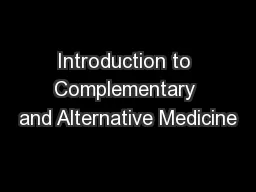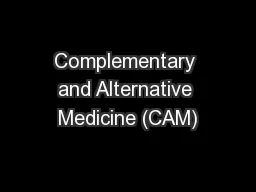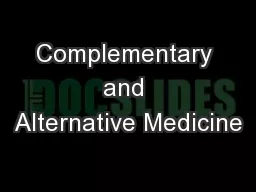PPT-Introduction to Complementary and Alternative Medicine
Author : tawny-fly | Published Date : 2018-09-24
in the VA Jeanette E Akhter MD MAc War Related Illness and Injury Center Washington DC Important Questions 1 What is CAM 2 Why is it important for me to know about
Presentation Embed Code
Download Presentation
Download Presentation The PPT/PDF document "Introduction to Complementary and Altern..." is the property of its rightful owner. Permission is granted to download and print the materials on this website for personal, non-commercial use only, and to display it on your personal computer provided you do not modify the materials and that you retain all copyright notices contained in the materials. By downloading content from our website, you accept the terms of this agreement.
Introduction to Complementary and Alternative Medicine: Transcript
Download Rules Of Document
"Introduction to Complementary and Alternative Medicine"The content belongs to its owner. You may download and print it for personal use, without modification, and keep all copyright notices. By downloading, you agree to these terms.
Related Documents














